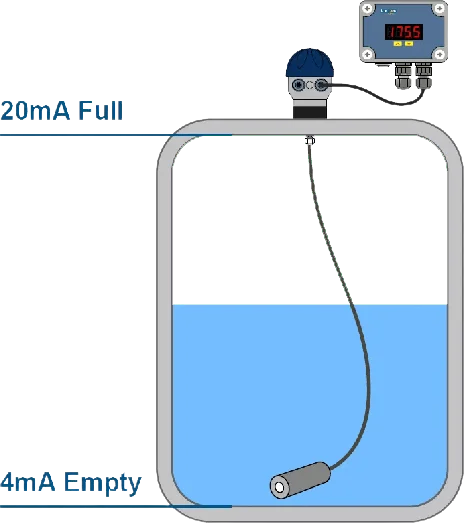Remote Telemetry Tank Level Monitoring Made Simple

Telemetry remote tank monitoring is a procedure that monitors the levels of liquids and chemicals in tanks from a remote place using wireless technology. This can be done from a remote location using telemetry remote tank monitoring. This procedure is excellent for tanks that carry hazardous liquids or chemicals, as well as tanks that are placed in areas that are difficult to reach or are in distant locations.
A submersible level sensor, a wireless transmitter, and a distant monitoring station are the three essential elements that make up the foundation of a telemetry remote tank monitoring system. The submersible level sensor is used to detect the head pressure of the liquid depending on the specific gravity of the liquid. This is accomplished by installing the sensor directly into the tank. This enables precise measurements to be taken regardless of whether or not the tank is empty. Because they are not influenced by foam, vapor, turbulence, or condensate and do not require any programming, submersible level sensors are considered to be the ideal choice for telemetry remote tank monitoring.
The data on the level are transmitted wirelessly from the sensor to the remote monitoring station via the wireless transmitter. Several types of wireless technology, including radio frequency (RF), cellular, and satellite, can be utilized to accomplish this task. Receiving and displaying the level of data that is transmitted from the sensor is the responsibility of the remote monitoring station, which may or may not be situated in close proximity to the control room.
It is not necessary for workers to physically visit the tank when using telemetry for remote tank monitoring, which is one of the most significant benefits of using this method. Because of this, there is a significantly lower chance of injury to personnel, which contributes to an overall improvement in safety. A local display, which can be placed in close proximity to the tank, can be used to offer a continual indicator of the liquid level in the tank. This can assist in the early detection of leaks or overfills, which can help to prevent costly overspills.
Companies that specialize in the supply of bulk chemicals can benefit tremendously from telemetry remote tank monitoring since it makes it possible to remotely monitor and manage the tanks. This can help to prevent stock-outs and reduce the risk of production downtime by ensuring that chemicals are delivered to tanks at the exact time they are required. The fact that the information can be accessed from any location and that it can be readily distributed to other individuals or computer systems makes the process more practical and effective.
In addition, telemetry remote tank monitoring makes it possible for the data to be obtained via the cloud. This makes it possible to have simple access to the data as well as straightforward control of the tanks. This makes it possible to access data from any location, and it also makes it simple to exchange data with other individuals or other systems. This may be especially helpful for businesses that have more than one tank located in a variety of different places.
In conclusion, telemetry remote tank monitoring is an effective instrument for regulating the storage and utilization of liquids and chemicals. Telemetry remote tank monitoring may be found here. It removes the requirement that workers physically reach the tank, which significantly lowers the likelihood that a person may sustain an injury and improves overall safety. Because they are not influenced by foam, vapor, turbulence, or condensate and do not require any programming, submersible level sensors are considered to be the ideal choice for telemetry remote tank monitoring. Because using a local display eliminates the need to dive into the tank, the process is both safer and more efficient. The use of telemetry for remote tank monitoring is especially helpful for businesses that specialize in the delivery of bulk chemicals. This type of monitoring makes it possible to remotely monitor and manage storage tanks, and it also enables data to be accessed via the cloud, which makes the process more practical and effective.


